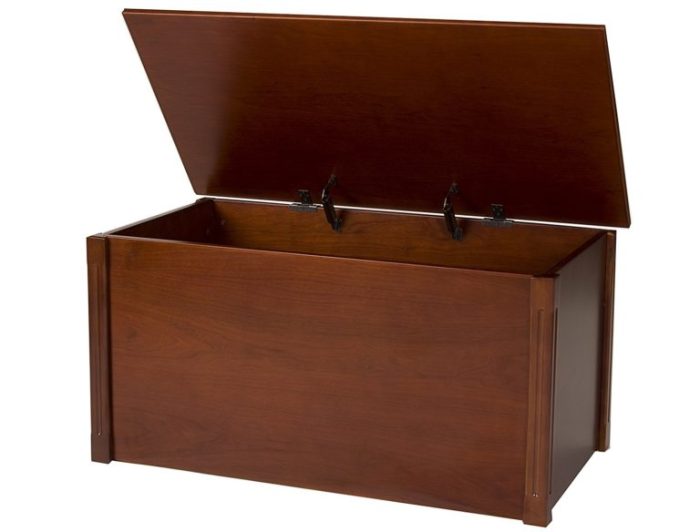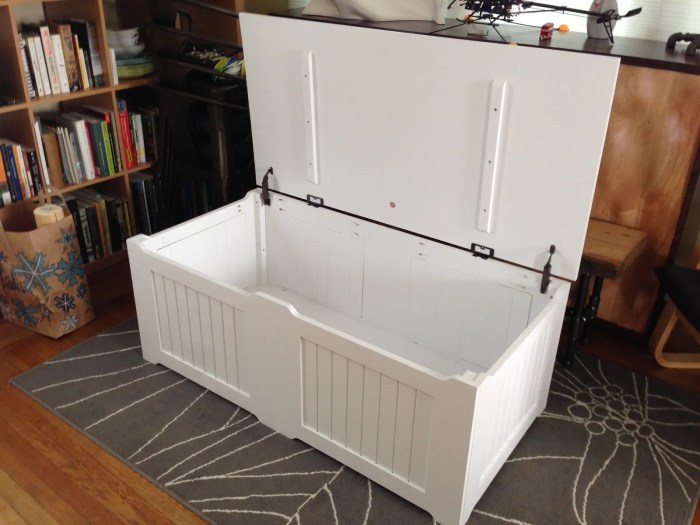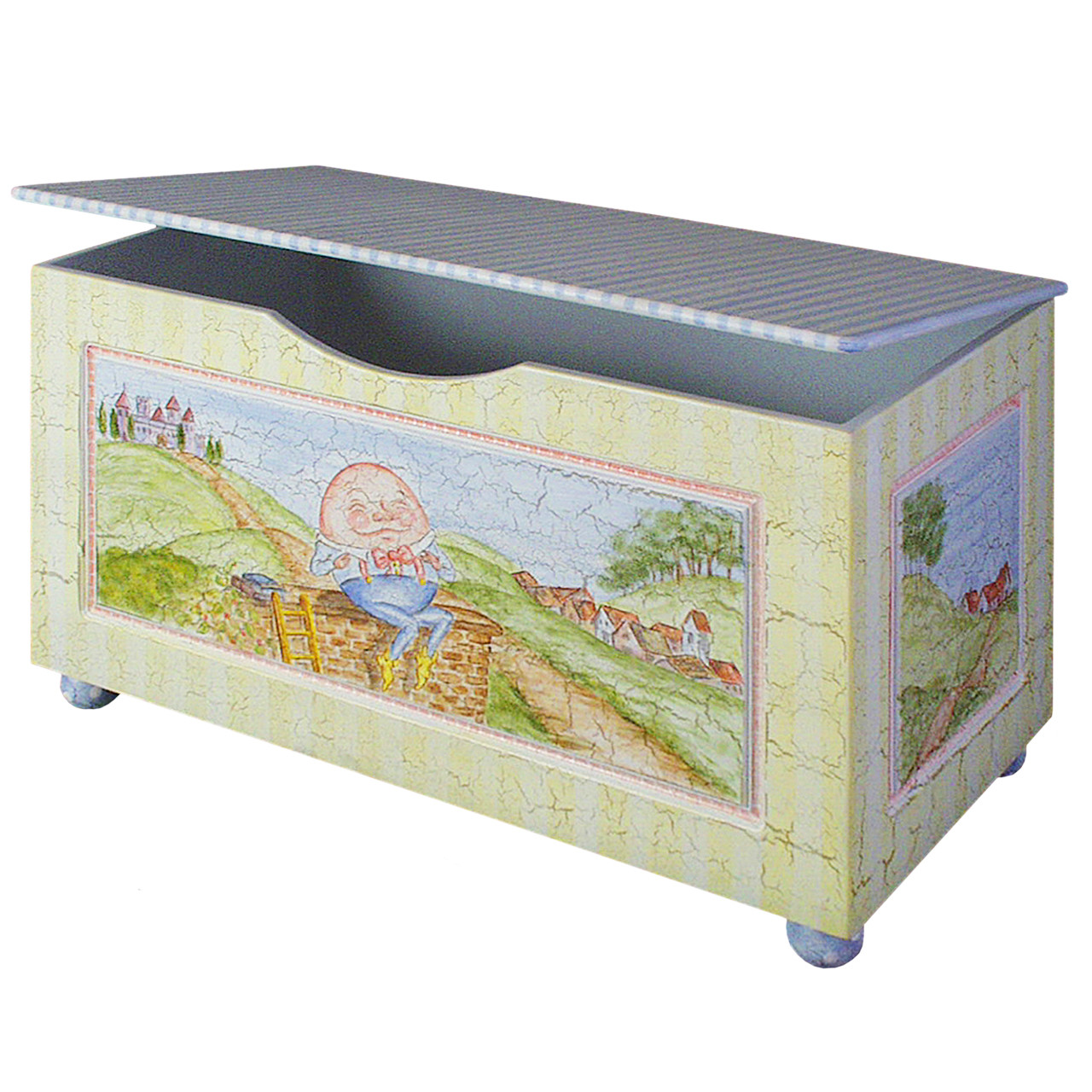A toy chest and its contents – A toy chest, a magical realm where cherished playthings reside, invites us on an enchanting journey into the world of childhood imagination and organization. From its humble beginnings to its modern-day incarnations, the toy chest has played a pivotal role in nurturing the minds and hearts of young ones.
This comprehensive guide delves into the fascinating world of toy chests, exploring their diverse types, their developmental benefits, and their creative uses. Get ready to unlock the secrets of this timeless childhood companion and create a haven where toys come to life.
Overview of a Toy Chest

A toy chest is a storage container specifically designed to hold toys and playthings. It typically features a hinged lid or a lift-off top, providing easy access to its contents.
Materials Used
Toy chests are commonly made from various materials, including:
- Wood:Durable and sturdy, providing a classic and timeless aesthetic.
- Plastic:Lightweight and affordable, offering a wide range of colors and designs.
- Fabric:Soft and pliable, allowing for easy folding and storage when not in use.
- Metal:Durable and secure, often used for larger toy chests.
History and Evolution
Toy chests have been used for centuries to store and organize toys, dating back to ancient civilizations. In the 18th century, toy chests became more elaborate, featuring intricate carvings and decorative designs. During the Victorian era, toy chests became popular as decorative pieces in children’s bedrooms.
Types of Toy Chests

Toy chests come in various shapes, sizes, and designs, each with its own advantages and disadvantages. Let’s explore the different types of toy chests available:
Size and Shape
Toy chests vary in size and shape to accommodate different amounts and types of toys. Small chests are suitable for smaller rooms or limited storage spaces, while larger chests provide ample storage for extensive toy collections. Rectangular chests are common, but you can also find square, oval, or even triangular chests.
Design
Toy chests can be categorized based on their design and materials:
- Traditional Wooden Chests:These chests are made from solid wood, providing durability and a classic aesthetic. They can be heavy and require regular maintenance to prevent warping or damage.
- Upholstered Chests:Upholstered chests are covered in fabric or leather, offering a comfortable seating option in addition to storage. They are typically lightweight and portable, but the fabric can be prone to stains or tears.
- Plastic Chests:Plastic chests are lightweight, affordable, and easy to clean. However, they can be less durable than wooden chests and may not provide the same aesthetic appeal.
Common Contents of a Toy Chest
A toy chest is a haven for children’s imaginations, filled with a diverse collection of playthings that foster their development and creativity. From classic dolls and action figures to cuddly stuffed animals and engaging board games, each category offers unique benefits that contribute to a child’s growth and well-being.
Dolls
- Promote imaginative play and social skills.
- Develop fine motor skills through dressing and styling dolls.
- Nurture empathy and compassion.
Action Figures
- Encourage imaginative play and storytelling.
- Enhance gross motor skills through physical play.
- Develop problem-solving abilities and spatial reasoning.
Stuffed Animals, A toy chest and its contents
- Provide comfort and security.
- Stimulate language development through imaginative play.
- Develop emotional intelligence and empathy.
Board Games
- Promote strategic thinking and problem-solving.
- Develop social skills and cooperation.
- Enhance language and communication abilities.
Benefits of Using a Toy Chest
Toy chests are not just storage solutions; they offer a myriad of benefits that enhance children’s development and the overall organization of their play spaces.
The old toy chest holds a treasure trove of childhood memories, from the teddy bear with a button nose to the wooden blocks with their faded paint. It’s a repository of dreams and adventures, like the ones found in natural hones , where the rough edges of experience are smoothed into something beautiful.
The toy chest, with its secrets and stories, is a reminder of the power of imagination and the enduring bond between a child and their toys.
Firstly, toy chests promote organization and tidiness by providing a designated place for toys to be stored. This helps children learn to put away their toys after playtime, fostering a sense of responsibility and order.
Fostering Imaginative Play and Creativity
Toy chests also play a crucial role in fostering imaginative play and creativity. When toys are neatly organized and easily accessible, children can engage in imaginative play more effectively. The enclosed space of a toy chest can stimulate children’s imaginations, allowing them to create their own worlds and stories.
Tips for Maximizing Benefits
- Choose a toy chest that is the right size for your child’s age and needs.
- Encourage your child to help organize and put away toys in the chest.
- Use the toy chest as a teaching tool to help your child learn about different types of toys and how to care for them.
Design Considerations for a Toy Chest

Choosing the right toy chest involves considering factors like size, shape, materials, durability, and aesthetics.
Size and Shape
Consider the available space and the amount of toys your child has. A larger toy chest will accommodate more toys, but it may take up more floor space. The shape of the toy chest should complement the room’s layout and furniture.
For instance, a rectangular chest fits well against a wall, while a round chest can be placed in the center of the room.
Materials and Durability
Toy chests are commonly made from wood, plastic, or fabric. Wood is durable and sturdy, but it can be heavy. Plastic chests are lightweight and easy to move, but they may not be as durable as wood. Fabric chests are soft and lightweight, but they may not be suitable for heavy toys.
Decor
The toy chest should complement the room’s decor. Consider the colors, patterns, and textures of the chest to ensure it blends well with the existing furniture and accessories. A toy chest with a playful design can add a touch of fun to the room.
Creative Uses for a Toy Chest

Beyond its traditional purpose of storing toys, a toy chest can be repurposed into a versatile piece of furniture with a range of creative uses. Its sturdy construction and spacious interior make it an ideal candidate for various functional and decorative applications.
With a little imagination, a toy chest can transform into a stylish storage ottoman, providing additional seating and hidden storage in your living room or bedroom. Its soft, padded lid offers a comfortable surface to rest your feet or sit on, while the interior can accommodate blankets, pillows, or other bulky items.
As a Coffee Table
With its ample surface area and sturdy base, a toy chest can serve as a unique and practical coffee table. The spacious interior provides ample storage for books, magazines, or remote controls, keeping your living room tidy and organized. A decorative tray or ottoman can be placed on top to create a cohesive and functional surface for your coffee, drinks, or snacks.
As a Decorative Piece
Toy chests can also be repurposed as eye-catching decorative pieces in your home. By painting it in bold colors or applying decorative embellishments, you can create a statement piece that complements your existing décor. Fill it with colorful throw pillows or blankets to add a touch of warmth and personality to your space.
FAQ Guide: A Toy Chest And Its Contents
What are the different types of toy chests available?
Toy chests come in various sizes, shapes, and designs, including traditional wooden chests, upholstered chests, and plastic chests.
What are the benefits of using a toy chest?
Toy chests promote organization and tidiness, foster imaginative play and creativity, and provide a dedicated space for toys.
How can I choose the right toy chest for my child?
Consider the size, shape, materials, durability, and design of the toy chest to ensure it meets your child’s needs and complements the room’s decor.
What are some creative uses for a toy chest?
Beyond storing toys, a toy chest can serve as a storage ottoman, a coffee table, or a decorative piece, adding functionality and style to any room.